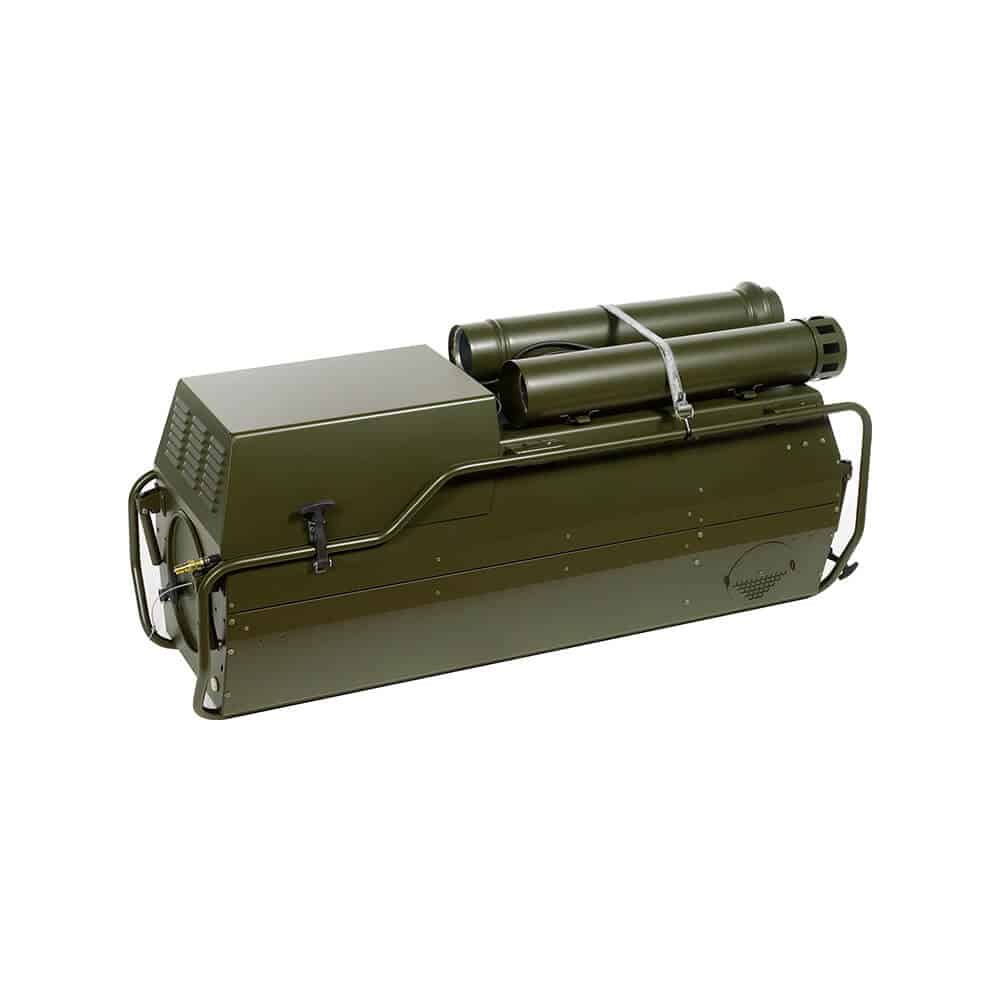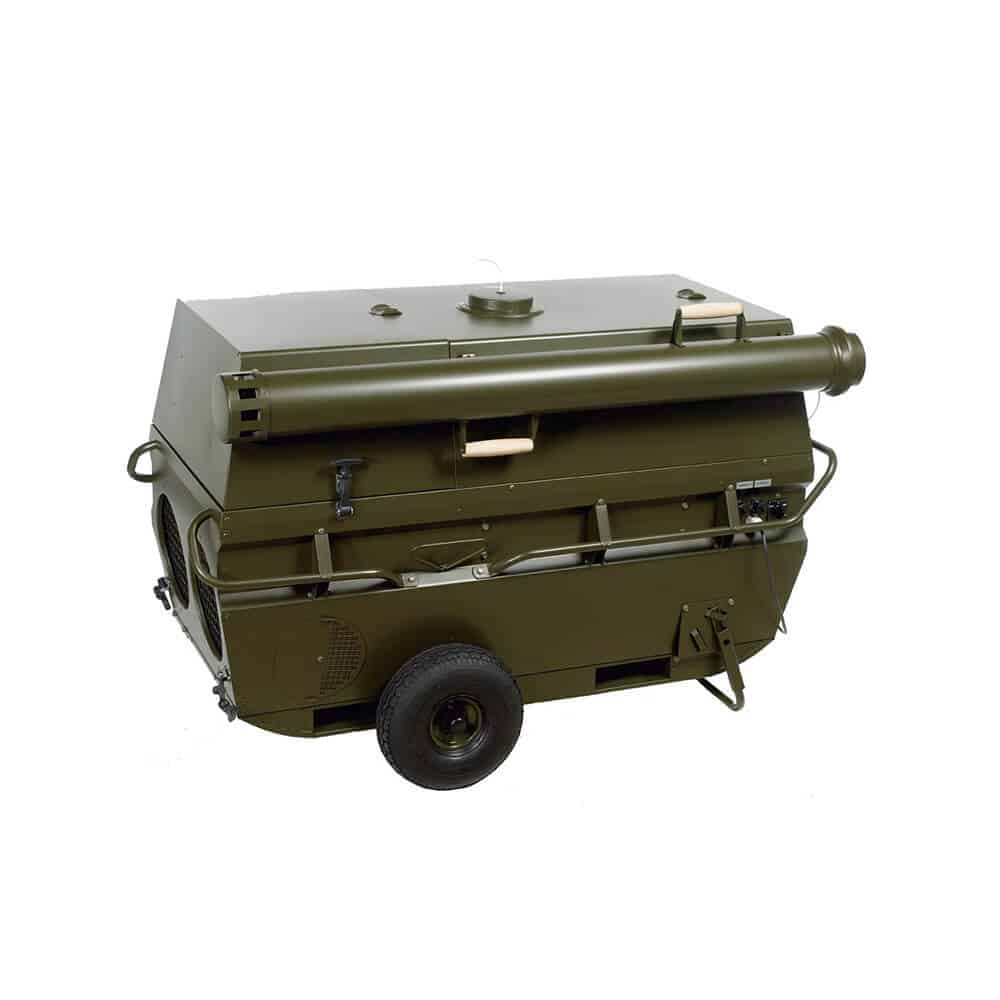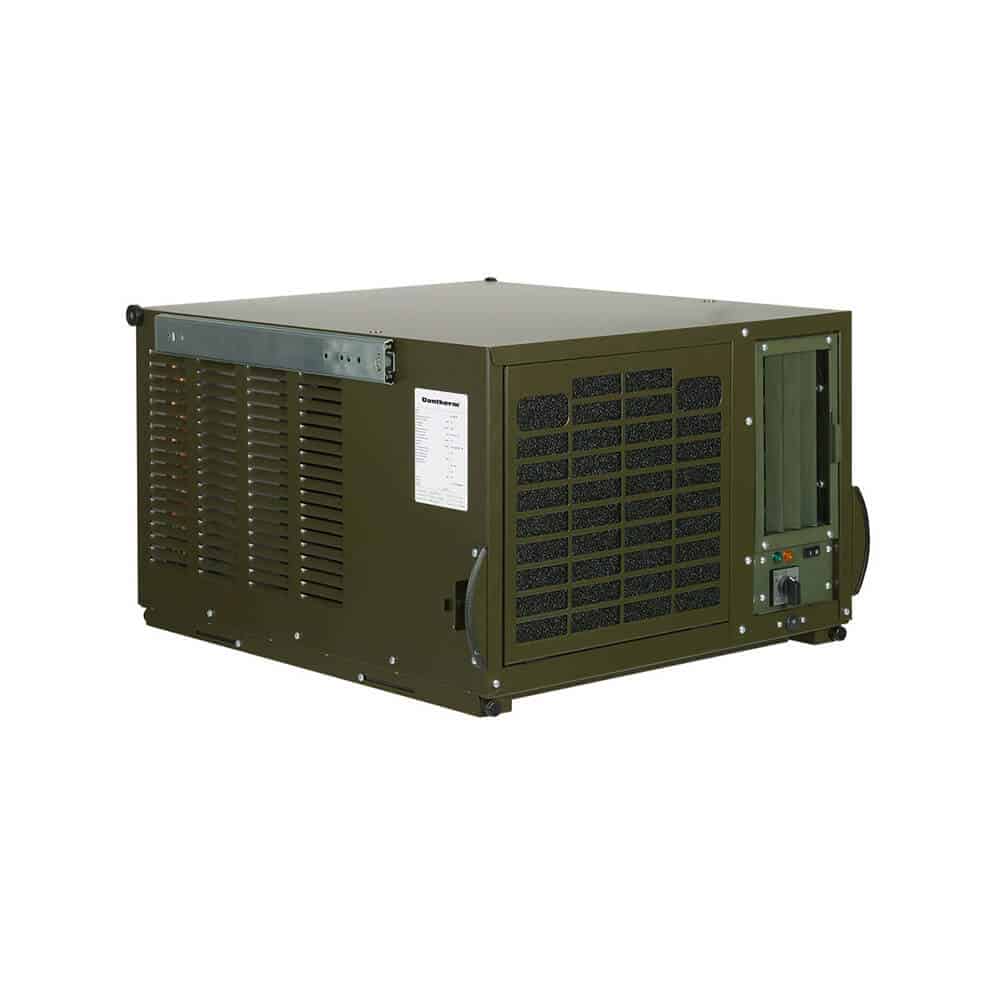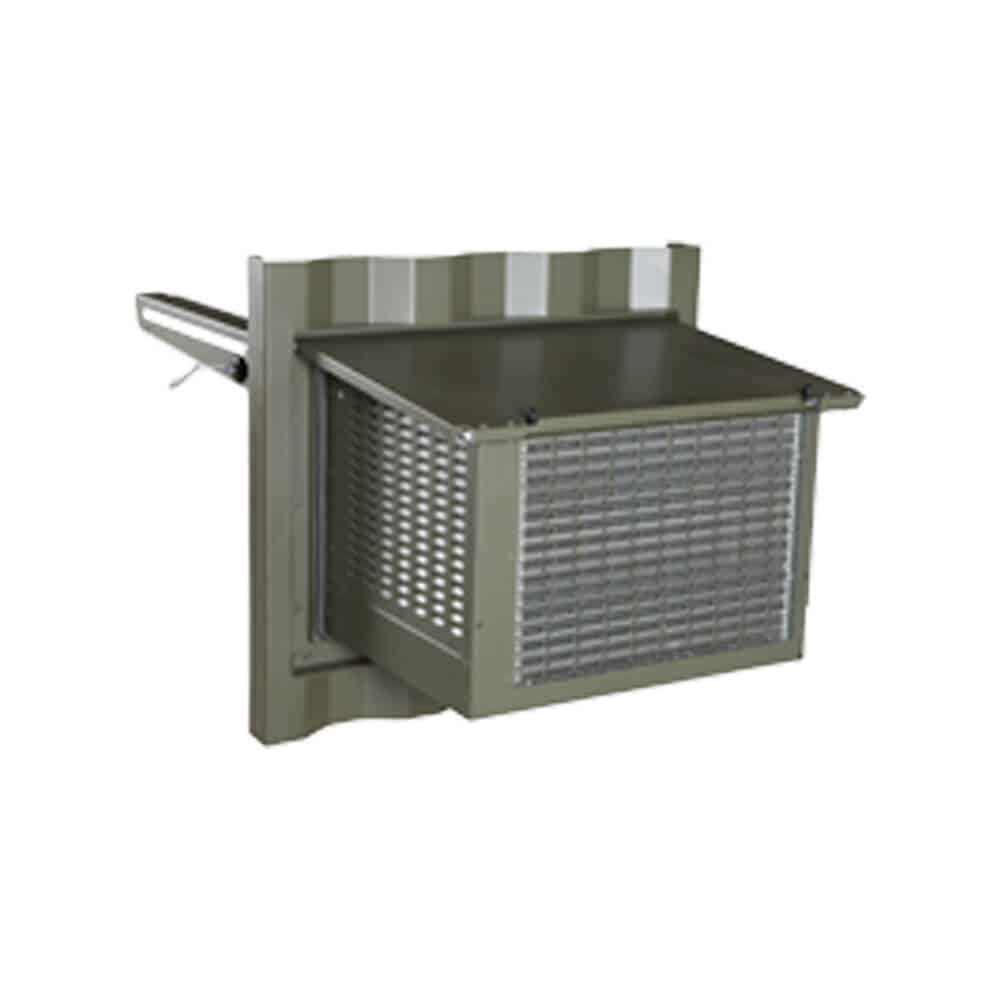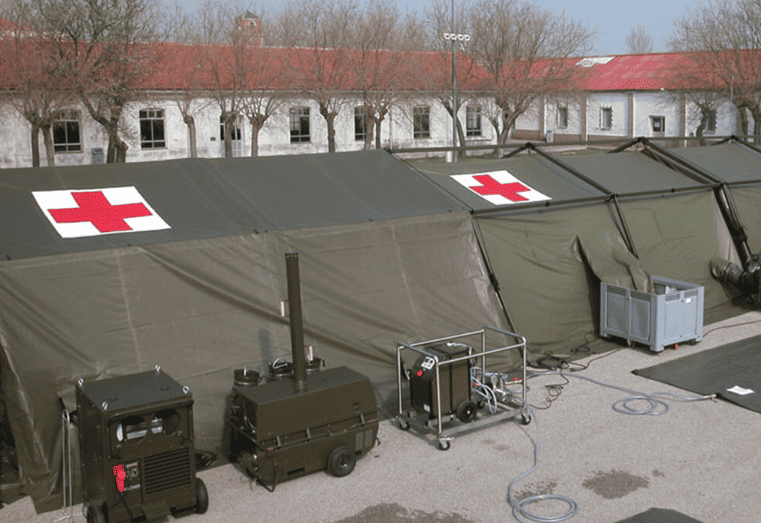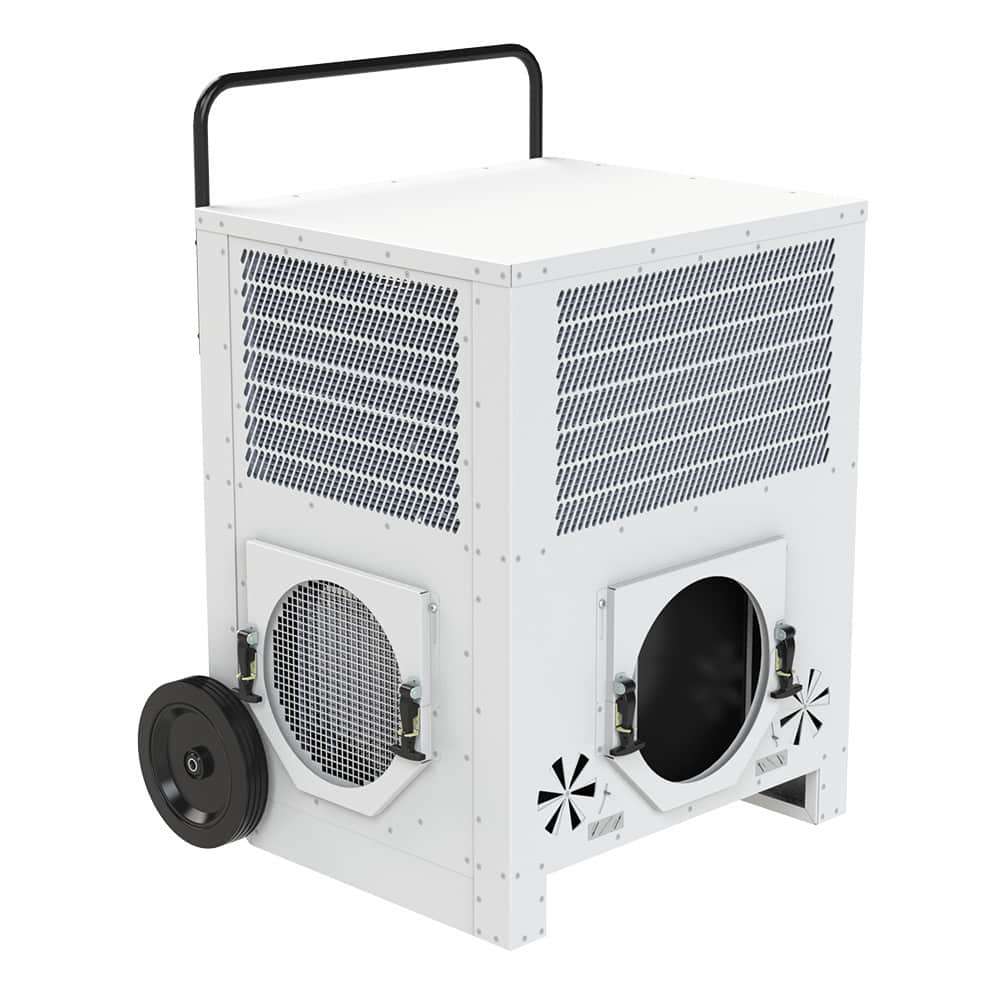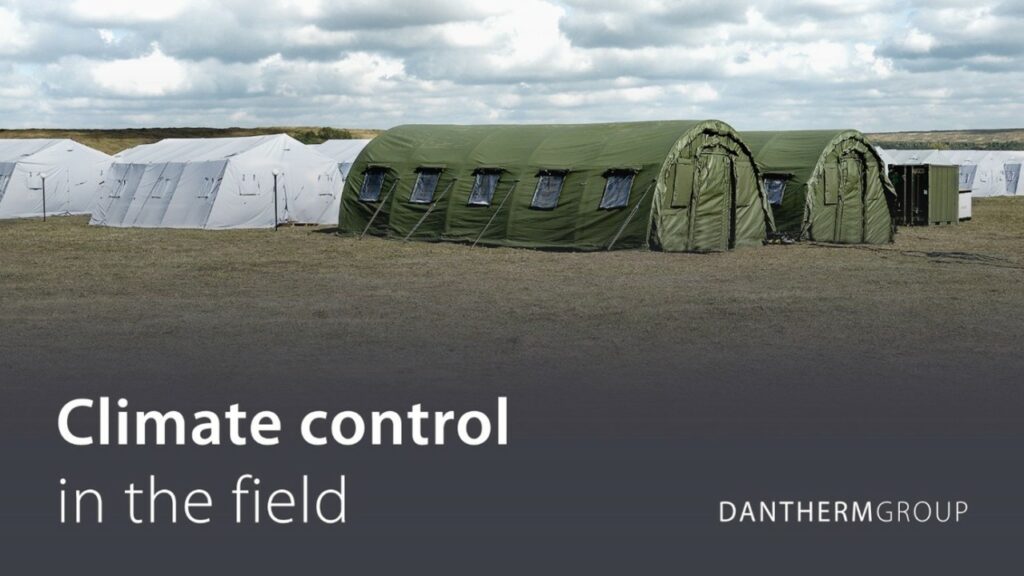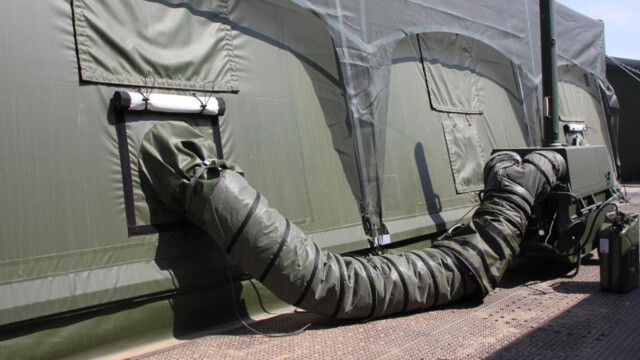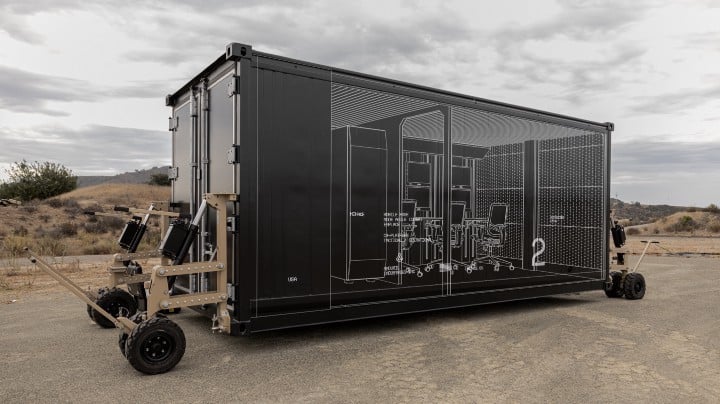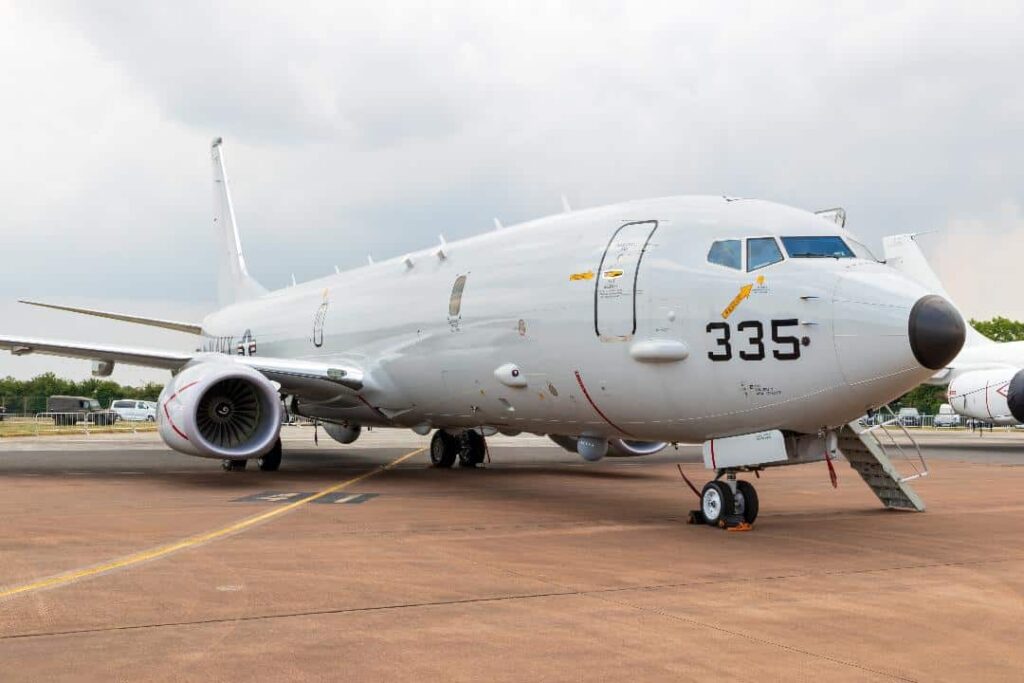Advanced Military HVAC Systems
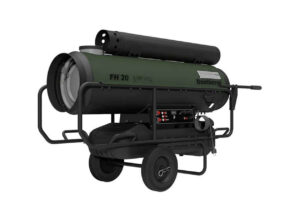
Transportable heating system from Dantherm.
Heating, ventilation, and air conditioning (HVAC) systems designed for military applications prioritize durability, efficiency, and adaptability. Unlike civilian systems, military HVAC units must withstand extreme temperatures, rough handling, and prolonged operation in remote or austere locations. These systems are critical for maintaining the comfort, safety, and operational readiness of military personnel, whether in permanent installations or deployed environments such as mobile command centers, vehicles, or field tents.
Military HVAC solutions encompass a range of technologies, including ruggedized heating units, high-capacity air conditioning systems, and advanced ventilation solutions. Many systems integrate air purification and filtration features to address contaminants like sand, dust, and noxious substances such as gunsmoke, chemicals, and fuel fumes.
Military HVAC Components
Heating
Military heaters are designed to reliably warm cold environments, ensuring personnel safety and comfort. They include military tent heaters that distribute heat efficiently in portable shelters and space heaters for smaller enclosures. Advanced designs often feature energy-efficient operation and compatibility with alternative fuels for maximum versatility in the field.
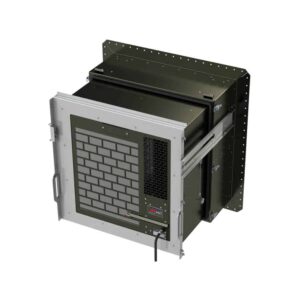
Window-mounted container cooler from Dantherm.
Ventilation
Effective ventilation systems are critical for maintaining air circulation and air quality. Military-grade ventilation units address challenges such as removing harmful substances, regulating airflow, and preventing the buildup of moisture or contaminants. Ventilation systems are often integrated with air filtration technologies to meet strict standards like CBRN protection.
Air Conditioning
Military air conditioning systems are built to operate reliably in extreme heat and provide cooling and humidity control. Portable AC units are ideal for temporary installations, while more robust systems are used in vehicles and permanent facilities. These systems often feature advanced filtration to remove airborne particulates and maintain breathable air quality.
COLPRO and Military HVAC Systems
Collective Protection (COLPRO) systems are a critical aspect of modern military HVAC technology. They are designed to safeguard personnel against chemical, biological, radiological, and nuclear (CBRN) threats. COLPRO-equipped HVAC systems provide a sealed and filtered environment, ensuring that air entering the protected space is free of harmful contaminants. These systems are essential for operations in areas where exposure to toxic substances or airborne pathogens poses significant risks.
Military HVAC systems integrated with COLPRO capabilities include advanced filtration and pressurization mechanisms. These features ensure:
- Air Filtration: Removal of hazardous particulates, including chemical agents, biological toxins, and radiological particles. Filters are often layered with activated carbon and HEPA elements to trap a wide range of contaminants.
- Positive Pressure Environments: By maintaining a higher internal air pressure than the surrounding area, COLPRO systems prevent the infiltration of external contaminants, ensuring a safe breathing environment.
- Sealed Structures: HVAC systems work in conjunction with specially designed enclosures to maintain an airtight seal, providing full protection for occupants.
COLPRO-equipped HVAC systems are used in everything from mobile shelters and command posts to vehicles and field hospitals. In addition to protecting against external threats, these systems often include capabilities to regulate temperature, humidity, and airflow, ensuring that personnel can operate effectively in high-stress situations.
The integration of COLPRO into military HVAC systems underscores the importance of advanced climate control technology in modern defense strategies. By combining environmental protection with robust heating, cooling, and ventilation, these systems enhance operational safety and resilience in high-risk environments.
Durability and Efficiency in Harsh Environments
Military HVAC units must function under extreme environmental conditions, from arid deserts to freezing tundras. To achieve this, systems are constructed from rugged materials and equipped with advanced engineering features, such as corrosion-resistant components and energy-efficient designs. These characteristics ensure reliable performance, even in challenging operational settings.
Emerging Trends in Military HVAC Technology
Innovation in military HVAC focuses on improving energy efficiency, reducing the logistical burden, and enhancing environmental performance. Key developments include:
- Energy-Efficient HVAC Systems: Reduced power consumption for longer operational endurance.
- Compact and Modular Designs: Easier transport and deployment of systems in remote locations.
- Enhanced Air Purification: Improved filtration technologies for compliance with stringent air quality standards.
Military HVAC systems are indispensable for ensuring optimal climate control, air quality, and safety in defense applications. These advanced systems play a vital role in supporting military operations, providing reliable heating, cooling, and ventilation in even the most demanding conditions. Whether maintaining temperature control in field tents, protecting vehicle crews from hazardous substances, or ensuring the comfort and safety of personnel in permanent installations, military HVAC systems are engineered to meet the highest standards of performance and resilience.



